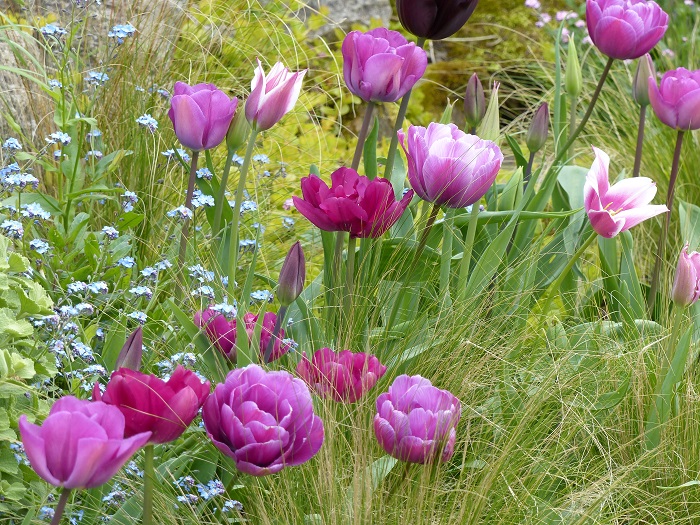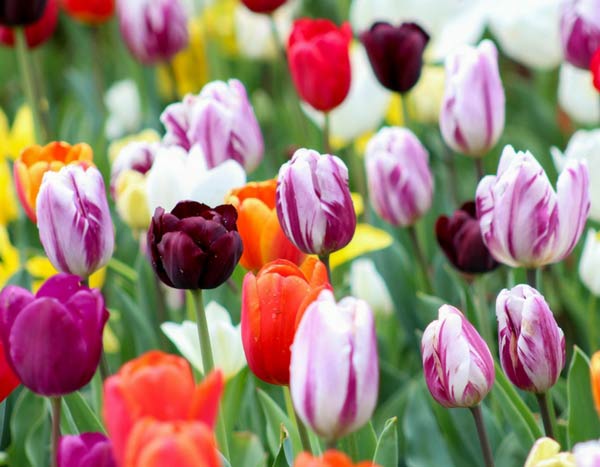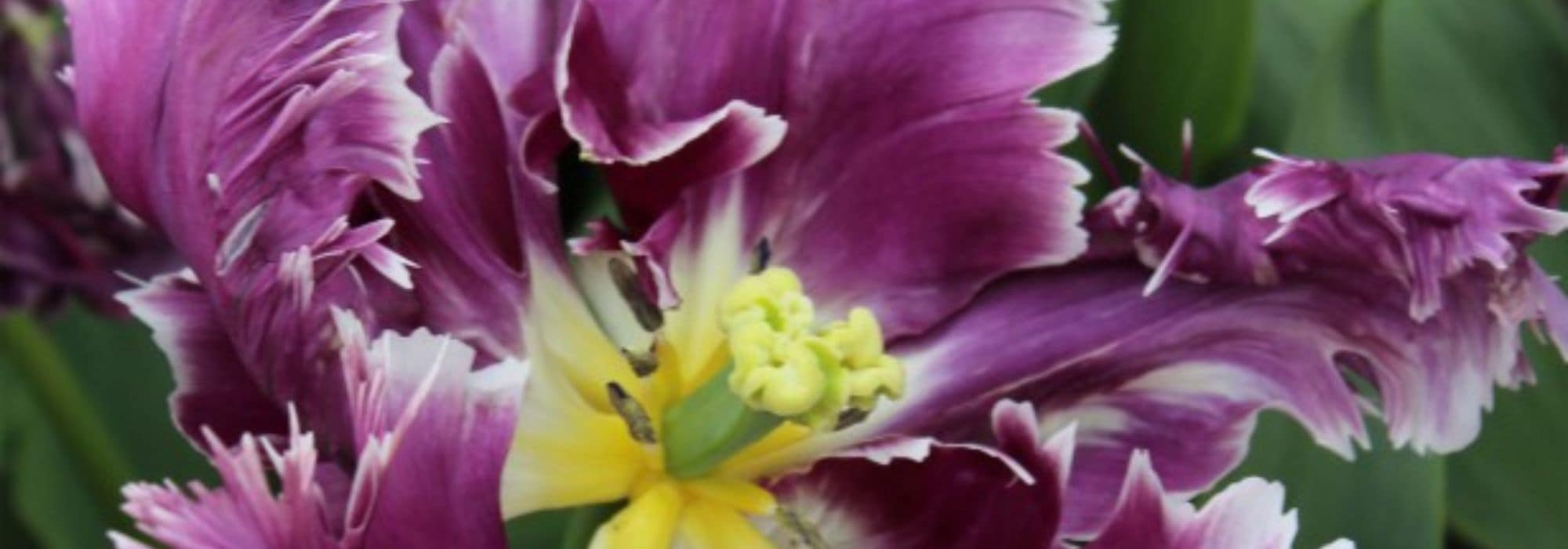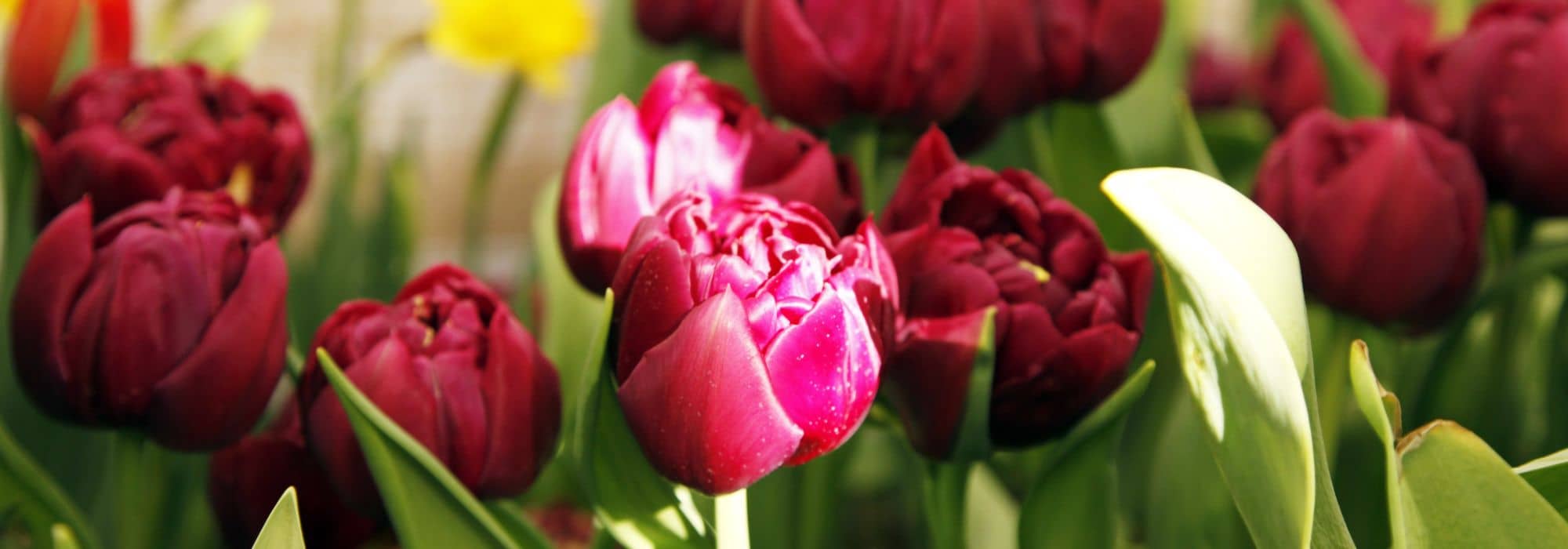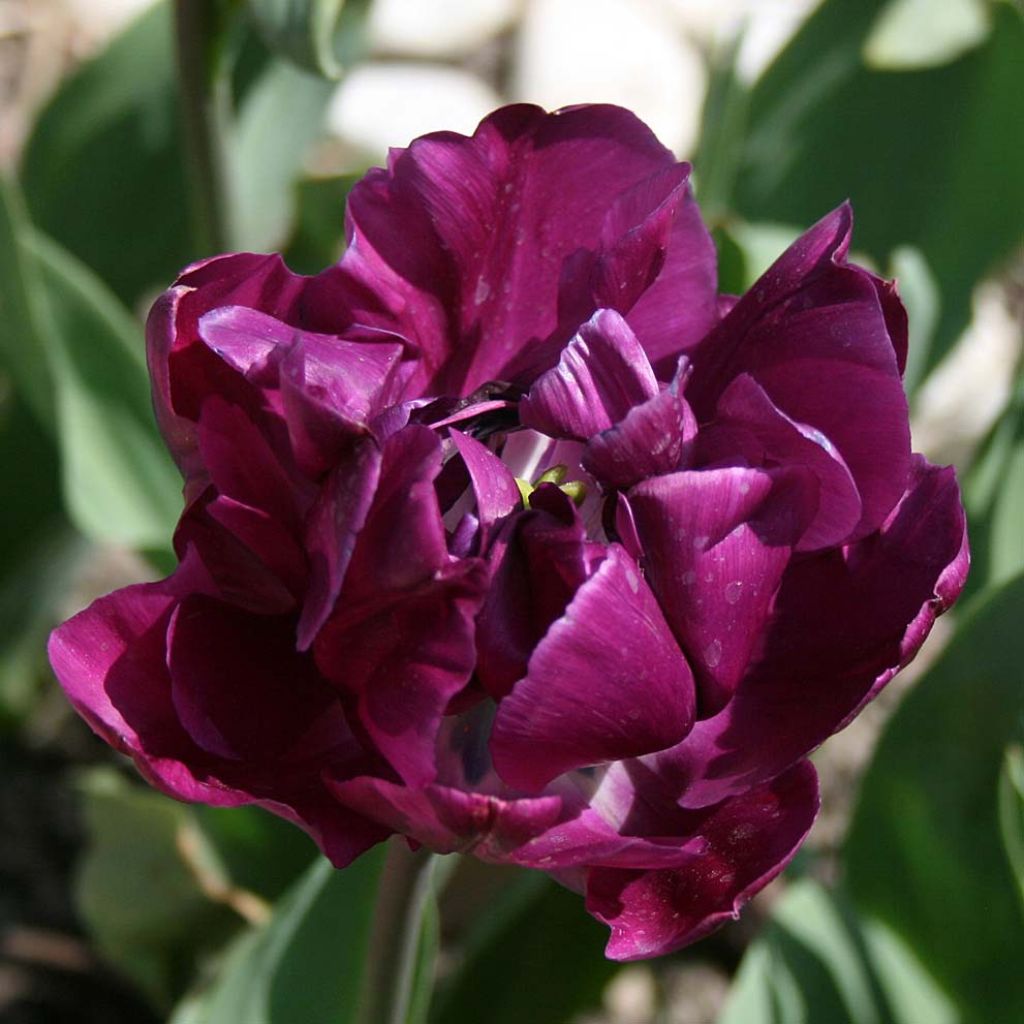

Tulipe double tardive Negrita Double
Tulipa Negrita Double - Double Late Tulip
Tulipa Negrita Double
Double late Tulip
A beautiful double tulip, the colour is as pronounced as in the website photos. I am delighted...
DR, 21/04/2024
Special offer!
Receive a €20 voucher for any order over €90 (excluding delivery costs, credit notes, and plastic-free options)!
1- Add your favorite plants to your cart.
2- Once you have reached €90, confirm your order (you can even choose the delivery date!).
3- As soon as your order is shipped, you will receive an email containing your voucher code, valid for 3 months (90 days).
Your voucher is unique and can only be used once, for any order with a minimum value of €20, excluding delivery costs.
Can be combined with other current offers, non-divisible and non-refundable.
This plant carries a 6 months recovery warranty
More information
We guarantee the quality of our plants for a full growing cycle, and will replace at our expense any plant that fails to recover under normal climatic and planting conditions.

Would this plant suit my garden?
Set up your Plantfit profile →
Description
Tulipa Negrita Double has a sumptuous, double, round flower, in very dark shades of violet-purple-blue, almost black at the base of the corolla. Depending on the time and lighting, its silky-textured petals change colour beautifully with the light, giving them a blue-grey reflection. They stand at the top of thick and sturdy stems, in the heart of spring, in May. Pair Negrita Double in the colours of twilight, with a single flower tulip in soft pink or orange, the colours of dawn, for a contrast of shapes and colours. Both will be perfect in spring flower beds or bouquets.
'Negrita Double' Tulip belongs to the Liliaceae family. Of horticultural origin, introduced in 2004, it is currently classified in the group of 'Late double tulips', whose main characteristic is very double and crinkled, peony-like flowers, carried on weather-resistant stems. 'Negrita Double' has a relatively short stem (40-45 cm (16-18in)) and its double, well-arranged flower is imposing, with a diameter of 8 cm (3in), reminiscent of a fully bloomed peony. The combination of colours is similar to that found on the Negrita triumph tulip, and the petals have the same silky appearance. Flowering takes place towards the end of the tulip season. To perfect the dark elegance of this variety, opulent wide lanceolate leaves of a slightly glaucous green extend in the sun.
The late double tulip Negrita Double fits well in large flower beds, with perennial plants and tulips with pastel colours that it will enhance. This tulip looks beautiful on balconies and terraces. It is ideal for creating elegant bouquets with 'Air' or 'Menton' varieties, white Lunaria and red lilies for example. In a vase, very little water at the bottom is enough! If your tulips open too quickly, you can add two to three ice cubes to the vase every day. Tulips are unmatched for bringing the colours of spring to pots or sunny gardens. Remember to consider the height and flowering period when designing your flower beds, as these can vary significantly from one cultivar to another. It is a good idea to plant a few more bulbs for beautiful cut flowers that last a long time in a vase.
Tulipa Negrita Double - Double Late Tulip in pictures
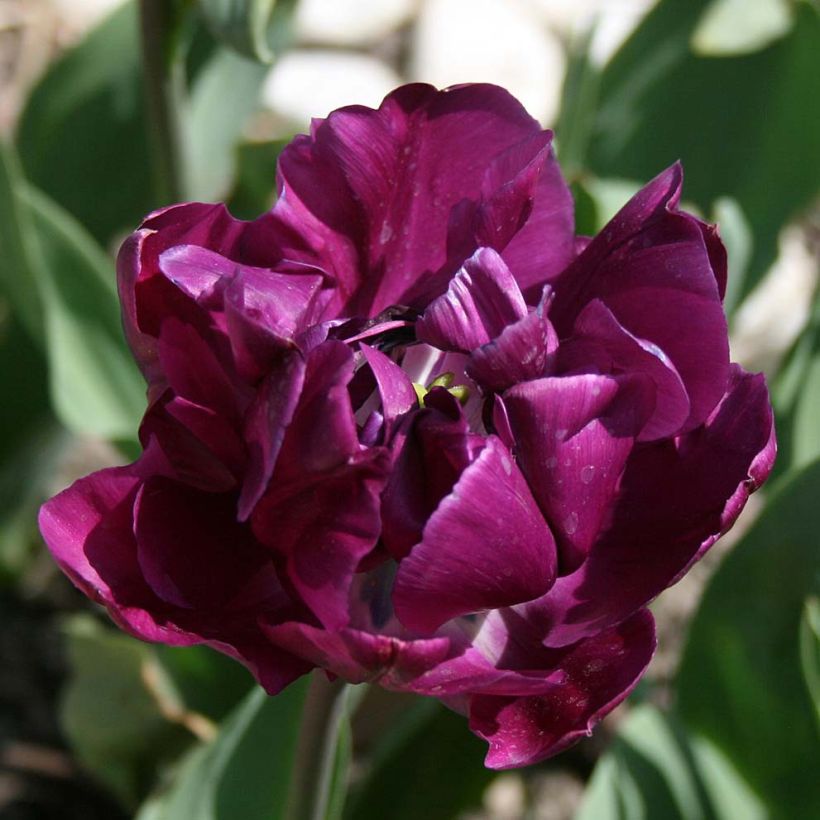

Plant habit
Flowering
Foliage
Botanical data
Tulipa
Negrita Double
Liliaceae
Double late Tulip
Cultivar or hybrid
Planting and care
Plant Tulip bulbs in autumn, from September to December, at a depth of 15 cm (6in), 10 cm (4in) apart in ordinary, slightly acidic, neutral, or slightly alkaline, loose, well-worked and well-drained soil. Never add poorly decomposed manure or compost to the planting soil, as this could cause the bulbs to rot. Tulips thrive in moist to dry soil, in a sunny or lightly shaded location. After flowering, their foliage becomes unsightly. We recommend planting heucheras, tiarellas, brunneras, bleeding hearts, or even euphorbias, at the front of your borders. Their foliage will enhance the colours of your tulips and elegantly conceal the yellowing leaves. Once flowering is over, it is best to remove the seed heads to avoid exhausting the plant. Allow the leaves to dry completely before cutting them.
Planting period
Intended location
Care
Planting & care advice
-
, onOrder confirmed
Reply from on Promesse de fleurs
Haven't found what you were looking for?
Hardiness is the lowest winter temperature a plant can endure without suffering serious damage or even dying. However, hardiness is affected by location (a sheltered area, such as a patio), protection (winter cover) and soil type (hardiness is improved by well-drained soil).

Photo Sharing Terms & Conditions
In order to encourage gardeners to interact and share their experiences, Promesse de fleurs offers various media enabling content to be uploaded onto its Site - in particular via the ‘Photo sharing’ module.
The User agrees to refrain from:
- Posting any content that is illegal, prejudicial, insulting, racist, inciteful to hatred, revisionist, contrary to public decency, that infringes on privacy or on the privacy rights of third parties, in particular the publicity rights of persons and goods, intellectual property rights, or the right to privacy.
- Submitting content on behalf of a third party;
- Impersonate the identity of a third party and/or publish any personal information about a third party;
In general, the User undertakes to refrain from any unethical behaviour.
All Content (in particular text, comments, files, images, photos, videos, creative works, etc.), which may be subject to property or intellectual property rights, image or other private rights, shall remain the property of the User, subject to the limited rights granted by the terms of the licence granted by Promesse de fleurs as stated below. Users are at liberty to publish or not to publish such Content on the Site, notably via the ‘Photo Sharing’ facility, and accept that this Content shall be made public and freely accessible, notably on the Internet.
Users further acknowledge, undertake to have ,and guarantee that they hold all necessary rights and permissions to publish such material on the Site, in particular with regard to the legislation in force pertaining to any privacy, property, intellectual property, image, or contractual rights, or rights of any other nature. By publishing such Content on the Site, Users acknowledge accepting full liability as publishers of the Content within the meaning of the law, and grant Promesse de fleurs, free of charge, an inclusive, worldwide licence for the said Content for the entire duration of its publication, including all reproduction, representation, up/downloading, displaying, performing, transmission, and storage rights.
Users also grant permission for their name to be linked to the Content and accept that this link may not always be made available.
By engaging in posting material, Users consent to their Content becoming automatically accessible on the Internet, in particular on other sites and/or blogs and/or web pages of the Promesse de fleurs site, including in particular social pages and the Promesse de fleurs catalogue.
Users may secure the removal of entrusted content free of charge by issuing a simple request via our contact form.
The flowering period indicated on our website applies to countries and regions located in USDA zone 8 (France, the United Kingdom, Ireland, the Netherlands, etc.)
It will vary according to where you live:
- In zones 9 to 10 (Italy, Spain, Greece, etc.), flowering will occur about 2 to 4 weeks earlier.
- In zones 6 to 7 (Germany, Poland, Slovenia, and lower mountainous regions), flowering will be delayed by 2 to 3 weeks.
- In zone 5 (Central Europe, Scandinavia), blooming will be delayed by 3 to 5 weeks.
In temperate climates, pruning of spring-flowering shrubs (forsythia, spireas, etc.) should be done just after flowering.
Pruning of summer-flowering shrubs (Indian Lilac, Perovskia, etc.) can be done in winter or spring.
In cold regions as well as with frost-sensitive plants, avoid pruning too early when severe frosts may still occur.
The planting period indicated on our website applies to countries and regions located in USDA zone 8 (France, United Kingdom, Ireland, Netherlands).
It will vary according to where you live:
- In Mediterranean zones (Marseille, Madrid, Milan, etc.), autumn and winter are the best planting periods.
- In continental zones (Strasbourg, Munich, Vienna, etc.), delay planting by 2 to 3 weeks in spring and bring it forward by 2 to 4 weeks in autumn.
- In mountainous regions (the Alps, Pyrenees, Carpathians, etc.), it is best to plant in late spring (May-June) or late summer (August-September).
The harvesting period indicated on our website applies to countries and regions in USDA zone 8 (France, England, Ireland, the Netherlands).
In colder areas (Scandinavia, Poland, Austria...) fruit and vegetable harvests are likely to be delayed by 3-4 weeks.
In warmer areas (Italy, Spain, Greece, etc.), harvesting will probably take place earlier, depending on weather conditions.
The sowing periods indicated on our website apply to countries and regions within USDA Zone 8 (France, UK, Ireland, Netherlands).
In colder areas (Scandinavia, Poland, Austria...), delay any outdoor sowing by 3-4 weeks, or sow under glass.
In warmer climes (Italy, Spain, Greece, etc.), bring outdoor sowing forward by a few weeks.


































